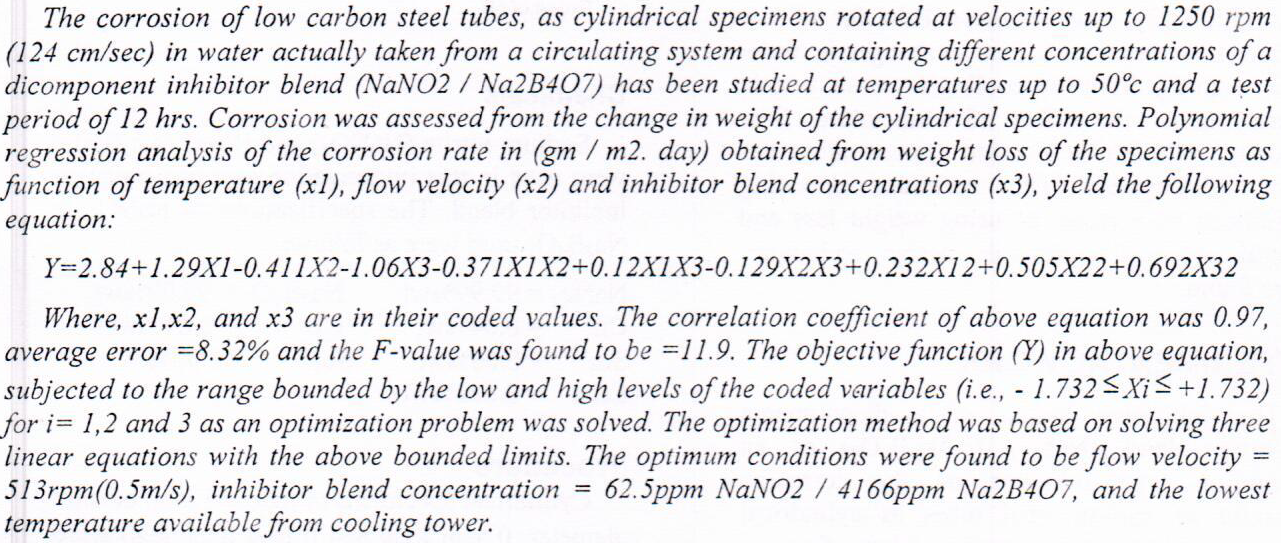
Background: Candida albicans is a prevalent commensal that can cause severe health problems in humans. One such condition that frequently returns after treatment is oral candidiasis. Aim: the goal of this research is to evaluate the efficiency of 940 nm as a fungicidal on the growth of Candida albicans in vitro. Material and Methods: In vitro samples (fungal swabs) were taken from the oral cavity of 75 patients suffering from oral thrush. Following the process of isolating and identifying Albicans. The samples are divided into four groups:(Group 1): Suspension of C. albicans was put in a solution of saline as a control group. (Group 2): Suspension of C. albicans that had been treated wit
... Show More (2)
(2)
Background: Candida albicans is a prevalent commensal that can cause severe health problems in humans. One such condition that frequently returns after treatment is oral candidiasis. Aim: the goal of this research is to evaluate the efficiency of 940 nm as a fungicidal on the growth of Candida albicans in vitro. Material and Methods: In vitro samples (fungal swabs) were taken from the oral cavity of 75 patients suffering from oral thrush. Following the process of isolating and identifying Albicans. The samples are divided into four groups:(Group 1): Suspension of C. albicans was put in a solution of saline as a control group. (Group 2): Suspension of C. albicans that had been treated with nystatin. (Group 3): Suspension of C. albica
... Show More (2)
(2)
 (1)
(1)
 (2)
(2)
This survey investigates the thermal evaporation of Ag2Se on glass substrates at various thermal annealing temperatures (300, 348, 398, and 448) °K. To ascertain the effect of annealing temperature on the structural, surface morphology, and optical properties of Ag2Se films, investigations and research were carried out. The crystal structure of the film was described by Xray diffraction and other methods.The physical structure and characteristics of the Ag2Se thin films were examined using X-ray and atomic force microscopy (AFM) based techniques. The Ag2Se films surface morphology was examined by AFM techniques; the investigation gave average diameter, surface roughness, and grain size mutation values with increasing annealing temperature
... Show MoreHyperthyroidism or thyrotoxicosis occurs due to excess release of thyroid hormone. These hormones regulate the body’s energy balance and have effects on adipokine level. There are several reports suggesting interrelation between adipokines (resistin and leptin) with thyroid dysfunction. Objectives: This study was established to investigate the effect of thyroid hormones in hyperthyroidism state on the level of some adipokines, leptin and resistin; in comparison with control. Patients and Methods: The present study included 50 Iraqi female patients with hyperthyroidism with age ranged between 30-58 years and 30 healthy controls with age ranged between 30-53 years. Serum samples were collected from study groups. The levels of thyroid hormon
... Show MoreWater quality sensors have recently received a lot of attention due to their impact on human health. Due to their distinct features, environmental sensors are based on carbon quantum dots (CQDs). In this study, CQDs were prepared using the electro-chemical method, where the structural and optical properties were studied. These quantum dots were used in the environmental sensor application after mixing them with three different materials: CQDs, Alq3 polymer and CQDs and Alq3 solutions using two different methods: drop casting and spin coating, and depositing them on silicon. The sensitivity of the water pollutants was studied for each case of the prepared samples after measuring the change in resistance of the samples at a temperature of
... Show More (2)
(2)
The effect of Low-Level Laser (LLL) provided by green semiconductor laser with an emission wavelength of 532 nm on of human blood of people with brain and prostate cancer has been investigated. The effect of LLL on white blood cell (WBC), NEUT, LYMPH and MONO have been considered. Platelet count (PLT) has also been considered in this work. 2 ml of blood sample were irradiating by a green laser of the dose of 4.8 J/cm2. The results suggest a potential effect of LLL on WBC, PLT, NEUT, LYMPH, and MONO of people with brain and prostate cancer Key words: white blood cell , platelet , low-level laser therapy
 (27)
(27)
 (24)
(24)
The Plerion nebula is characterized by its pulsar that fills the center of the supernova remnant with radio and X-ray frequencies. In our galaxy there are nine naked plerionic systems known, of which the Crab Nebula is the best-known example. It has been studied this instance in order to investigate how the pulsar energy affect on the distribution and evolution of the remnant as well as study the pulsar kick velocity and its influence on the remnant. From the obtained results it's found that, the pulsar of the Crab Nebula injects about (2−3)𝑥 1047 erg of energy to the remnant, although this energy is small compared to the supernova explosion energy which is about 1051 erg but still plays a significant role in the distribution and the m
... Show More